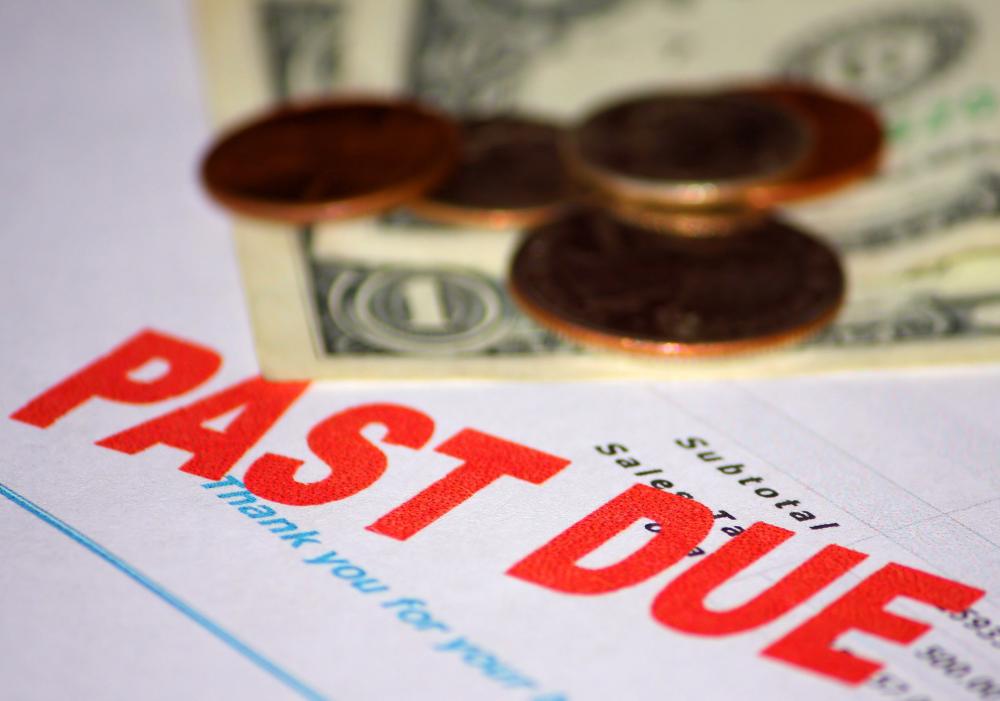At WiseGEEK, we're committed to delivering accurate, trustworthy information. Our expert-authored content is rigorously fact-checked and sourced from credible authorities. Discover how we uphold the highest standards in providing you with reliable knowledge.
What is Consumer Debt?
Consumer debt is a broad term that covers all types of consumer credit that is currently outstanding. This type of debt is usually understood to include any and all extensions of credit that have to do with the acquisition of goods that are considered consumable and subject to depreciation over time. Except in extremely rare cases around the world, consumer debt is not secured by pledging any type of collateral to back the debt.
Perhaps the most common type of consumer debt in the world today has to do with credit cards. When an institution issues a credit card to a new customer, most formats call for applying a specific credit limit to the card. The credit limit represents the maximum amount of credit card debt that the cardholder can accrue. Any outstanding balance on any credit card is considered to be consumer debt.

Along with credit cards, another common form of this type of debt is the auto loan. Like many examples of a consumer product, an automobile is understood to be an asset that will depreciate in value over time. When the vehicle is purchased using a loan from a bank or other financial institution, the outstanding balance on that loan, including interest payments due, is understood to represent consumer debt.

While not as common today as in years past, many local and chain businesses extend short-term credit on customer purchases. This type of credit is also classified as a form of consumer debt. Whether the debt is in the form of a tab at a local coffee house or restaurant that is paid monthly, or in store financing for household appliances, these types of purchases are seen as the financing of consumable products or consumer goods that will depreciate in value over time.

It is not unusual for any household to carry some type of consumer debt at any given time. In fact, may analysts understand that the level of consumer debt, when maintained within certain limits, functions as a strong indicator of a stable economy. In this sense, the presence of this type of debt demonstrates that consumers are positive about the condition of the nation and feel free to make purchases with full faith in their ability to pay for those goods over time.
AS FEATURED ON:
AS FEATURED ON:















Discussion Comments
Consumer debt services will help dig anyone out of a hole. They take all of your debt, put it in one big pile and negotiate a lower rate to help pay it off. Many creditors would rather take a lower interest rate than not get their money back at all.
@everetra - I thought I read somewhere that Congress passed some legislation that forced the credit card companies to make it clear, in plain English, how they were going to be charging consumers—or limit the fine print to one page or two, something like that.
@miriam98 - The credit card industry took a big hit as people filed for bankruptcy and otherwise tried to reduce their personal debt. I read somewhere that the credit card companies were trying to regroup by charging consumers a fee the moment they made a purchase. That way, they could still profit from people like you who still pay up at the end of the month. I don’t think that’s right. Whatever you do, be sure to read all the fine print that you get in your credit card statement. That will tell you if they’ve made changes to how they charge for purchases and how it will impact you.
Consumer credit card debt has got to be the worst kind of consumer debt imaginable. That’s why all the financial advice gurus tell you to attack that debt first. Interest rates of twenty percent and higher are a stranglehold around the family budget. We try to pay off our credit cards at the end of the month, but sometimes there’s more month than money at the end of the month, and we have to let the charges carry on for quite some time. However we try to knock down that debt as fast as we can.
Post your comments